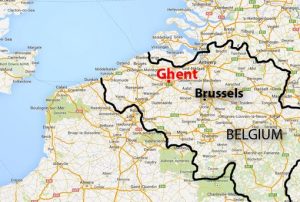Happy Monday, dear readers!
Today, we bring you a wanderlust reading list based on my recent trip to Belgium…it was for a history conference, which was great, but to be honest, I was so busy, I didn’t even get a waffle. I’m not joking.
I spent most of my time in Ghent, a port city that grew along the convergence of the Scheldt and Leie rivers, and was one of the wealthiest cities in Belgium–and Europe–in the middle ages. Flemish art and culture flourished here, as can been seen in the stunning architecture and artwork throughout the city; for the record, ‘Flemish’ is a word that describes the Dutch language and culture, as well as the numerous dialects of the Dutch language (Belgian Dutch sounds surprisingly different from Netherlands Dutch, which I never knew!)
The city remained a major site for the textile industry, making it a hub of culture and commerce well into the 19th century, and the War of 1812 ended with the signing of the Treaty of Ghent. Two years later, the University of Ghent was established, and remains a prestigious place of learning to this day.
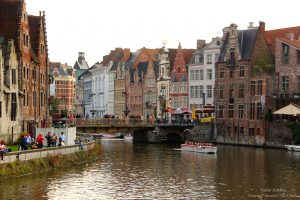
Though Ghent was occupied by the German Army in both World War One and World War Two, but remained comparatively untouched, especially in comparison to places like Ypres, which was literally wiped off the map. As a result, Ghent is a stunningly beautiful city, with panoramic river views, big statues, wide, welcoming squares, and plenty of outdoor spaces in which to take it all in. There are oodles of bars, cafes, and restaurants, offering a huge variety of food and drink–particularly Belgian beer, which is typically light in color and so wheaty that it’s rather like drinking a dinner roll. As a result, it’s a perfect choice for drinking while sitting a spell near the river and watching the varied world go by.
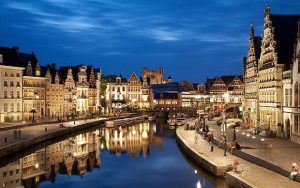
And while I didn’t get a waffle in the course of my travels, I did, however, find a charming English-language bookstore by the Leie River, who introduced me to a whole range of Belgian literature (in translation, obviously) that made me feel like I had spent weeks wandering the Flemish countryside, waffle in hand, chatting with charming Dutch-speaking locals and their picturesque cows. And, thanks to that chat, I was able to get a number of recommendations for those who would like to take an armchair adventure to Belgium–and might very well come back having experienced much more culture than I did!
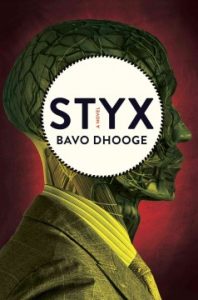 Styx: The prolific and consistently surprising Bavo Dhooge was born in Ghent, though his latest paranormal detective novel is set in the coastal city of Ostend. Rather like Aspe’s Van In, the detective in this story, the middle-aged Rafael Styx, is cranky and sore, dealing with a bad hip and a failing marriage. However, this case deals with a ruthlessly clever serial killer known as The Stuffer, who fills his victims full of sand and poses them as public art installations. Indeed, Styx very nearly winds up as The Stuffer’s latest victims–but rather than dying of the shot he took to the chest, Styx instead wakes up a zombie. Though he has to deal with some unpleasant side-effects of this condition, not least of which is nearly-controllable bodily decay and a growing taste for human flesh, Styx finds that there are benefits–including the ability to travel within Ostend’s history, which gives Styx a very unique insight into his criminal prey. Dhooge’s description of Ostend during the Belle Epoque is not to be missed, but it is his wickedly black humor and willingness to take his story where you least expect it, is really what makes this book such a treat to read.
Styx: The prolific and consistently surprising Bavo Dhooge was born in Ghent, though his latest paranormal detective novel is set in the coastal city of Ostend. Rather like Aspe’s Van In, the detective in this story, the middle-aged Rafael Styx, is cranky and sore, dealing with a bad hip and a failing marriage. However, this case deals with a ruthlessly clever serial killer known as The Stuffer, who fills his victims full of sand and poses them as public art installations. Indeed, Styx very nearly winds up as The Stuffer’s latest victims–but rather than dying of the shot he took to the chest, Styx instead wakes up a zombie. Though he has to deal with some unpleasant side-effects of this condition, not least of which is nearly-controllable bodily decay and a growing taste for human flesh, Styx finds that there are benefits–including the ability to travel within Ostend’s history, which gives Styx a very unique insight into his criminal prey. Dhooge’s description of Ostend during the Belle Epoque is not to be missed, but it is his wickedly black humor and willingness to take his story where you least expect it, is really what makes this book such a treat to read.
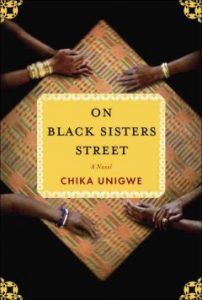 On Black Sisters Street: A native of Nigeria, Chika Unigwe now lives in Belgium, and her stories relate the pain, struggles, and consistent loss that is the immigrant experience. In this novel, set in Antwerp, four women share an apartment in the red-light district, pledged to a ruthless Madam and an enigmatic pimp, they are seen by most as little more than commodities. But in Unigwe’s startling and deeply moving story, each woman presents her own story, revealing her deep humanity, and the secrets, hopes, and fears that drive her onward. Though bleak, the bond that forms between these women is powerful and transformative, making this story far more than a tear-jerker. It is also a ruthlessly precise and incisive view of Europe from an African perspective, giving new insight into the perennial issue of immigration, to Europe, as well as around the world.
On Black Sisters Street: A native of Nigeria, Chika Unigwe now lives in Belgium, and her stories relate the pain, struggles, and consistent loss that is the immigrant experience. In this novel, set in Antwerp, four women share an apartment in the red-light district, pledged to a ruthless Madam and an enigmatic pimp, they are seen by most as little more than commodities. But in Unigwe’s startling and deeply moving story, each woman presents her own story, revealing her deep humanity, and the secrets, hopes, and fears that drive her onward. Though bleak, the bond that forms between these women is powerful and transformative, making this story far more than a tear-jerker. It is also a ruthlessly precise and incisive view of Europe from an African perspective, giving new insight into the perennial issue of immigration, to Europe, as well as around the world.
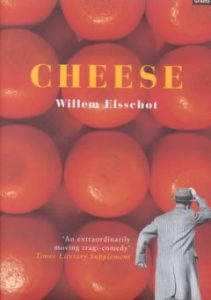 Cheese: There is no political satire quite like a Belgian political satire, and this classic by Dutch author William Elsschot is a hallmark of that particular genre. First published in 1933, this novel tells the story of Frans Laarmans, a harried clerk in Antwerp who suddenly finds himself the chief agent for Edam cheese, those little red-rind Dutch cheeses, and ordered to sell thousands of wheels, and some 370 cases containing ten thousand full-cream cheeses. This might be some people’s dream come true, but not only does Laarmans not know how to run a business, he doesn’t even like cheese! As a visit from his bosses loom, Laarmans traverses the city, exploring its rigid class structure and charming foibles, gently cracking under the pressure of cheese. Though Elsschot had a stellar wit, and delivers the details of this story with deadpan humor, he still manages to build quite a lot of tension into the story, dragging readers along on Laarmans’ quest to sell cheese and recover his life. This book also provides some fascinating insight into the world of historic Belgium, and all its quirks.
Cheese: There is no political satire quite like a Belgian political satire, and this classic by Dutch author William Elsschot is a hallmark of that particular genre. First published in 1933, this novel tells the story of Frans Laarmans, a harried clerk in Antwerp who suddenly finds himself the chief agent for Edam cheese, those little red-rind Dutch cheeses, and ordered to sell thousands of wheels, and some 370 cases containing ten thousand full-cream cheeses. This might be some people’s dream come true, but not only does Laarmans not know how to run a business, he doesn’t even like cheese! As a visit from his bosses loom, Laarmans traverses the city, exploring its rigid class structure and charming foibles, gently cracking under the pressure of cheese. Though Elsschot had a stellar wit, and delivers the details of this story with deadpan humor, he still manages to build quite a lot of tension into the story, dragging readers along on Laarmans’ quest to sell cheese and recover his life. This book also provides some fascinating insight into the world of historic Belgium, and all its quirks.
I hope you’ve enjoyed this adventure, dear readers!

